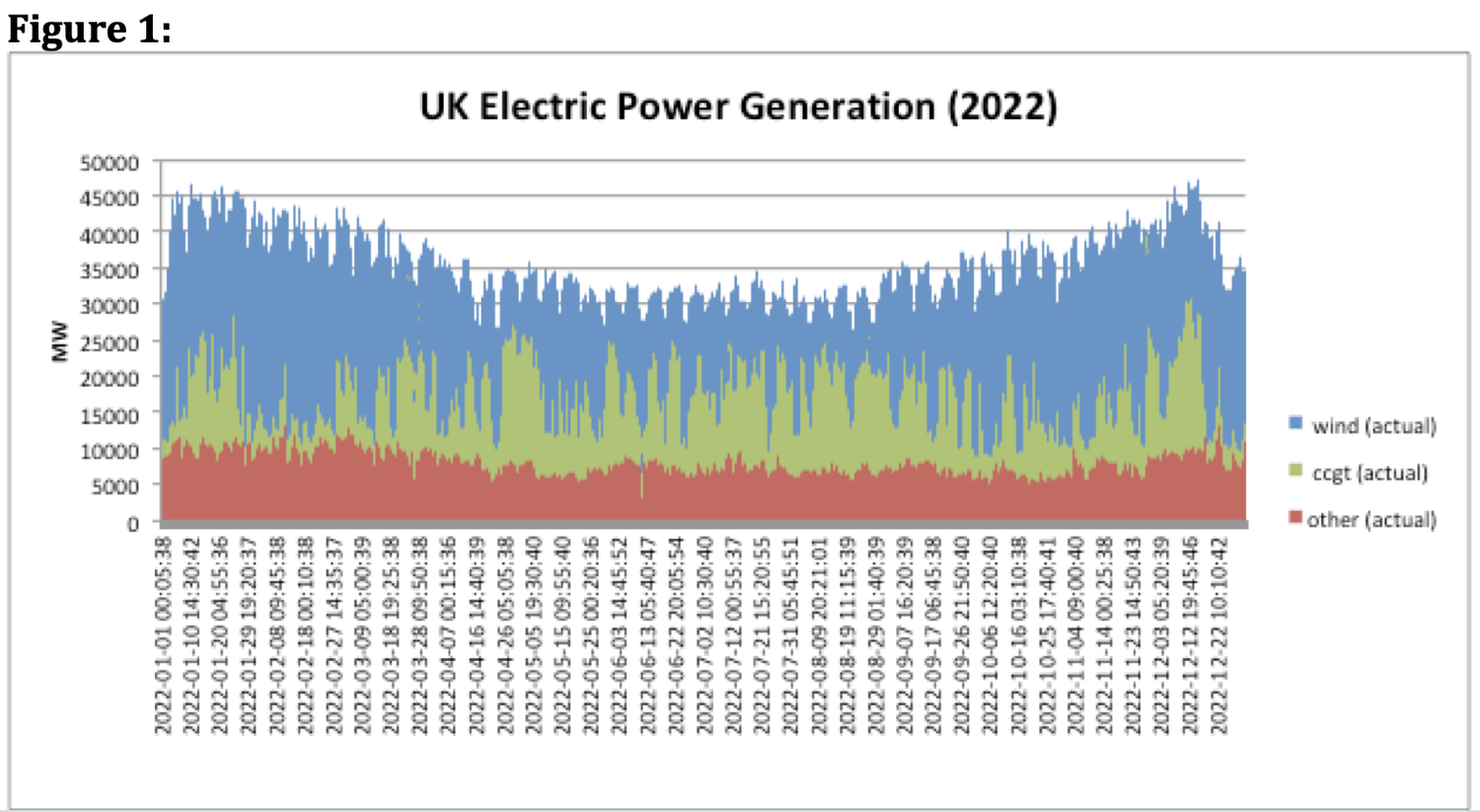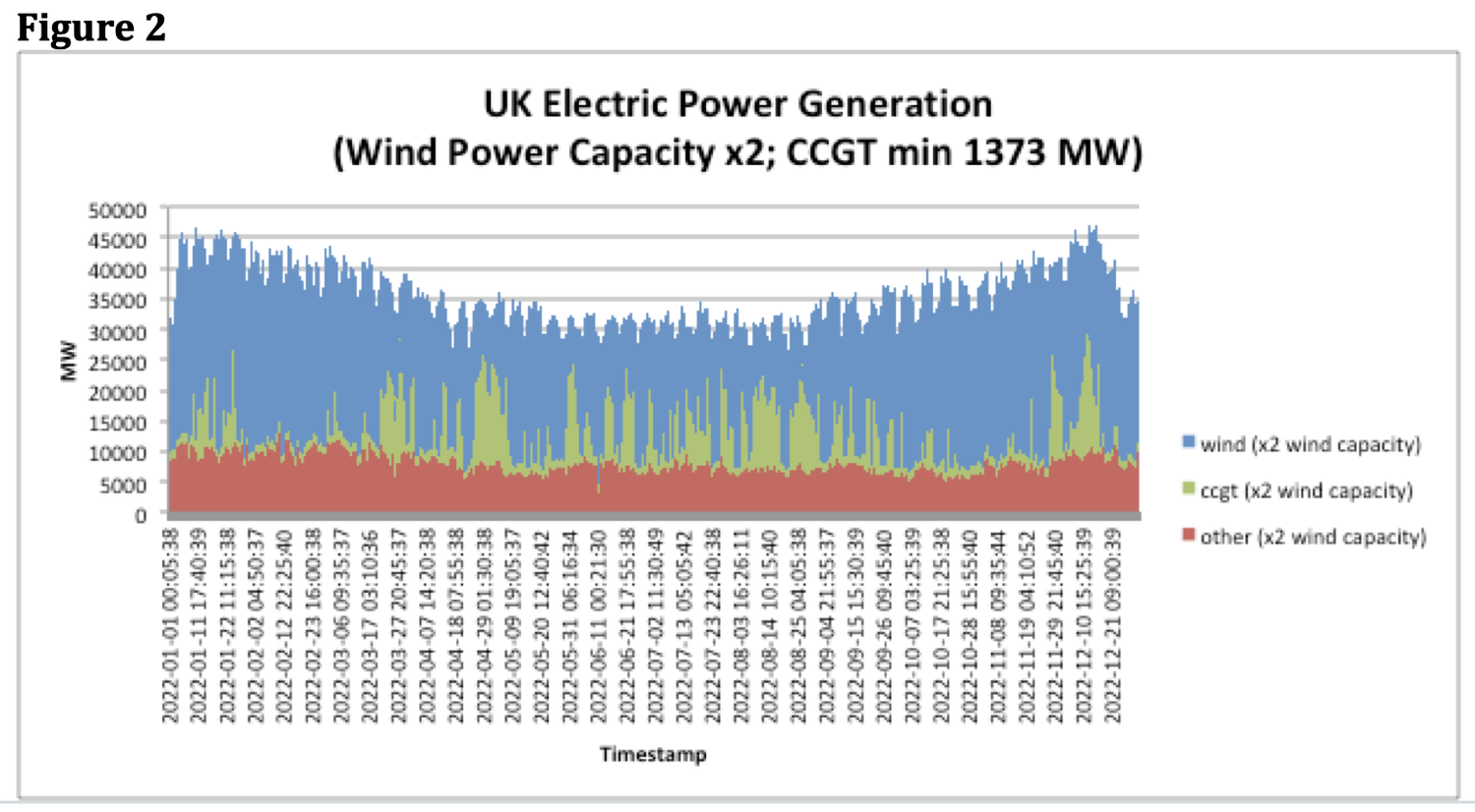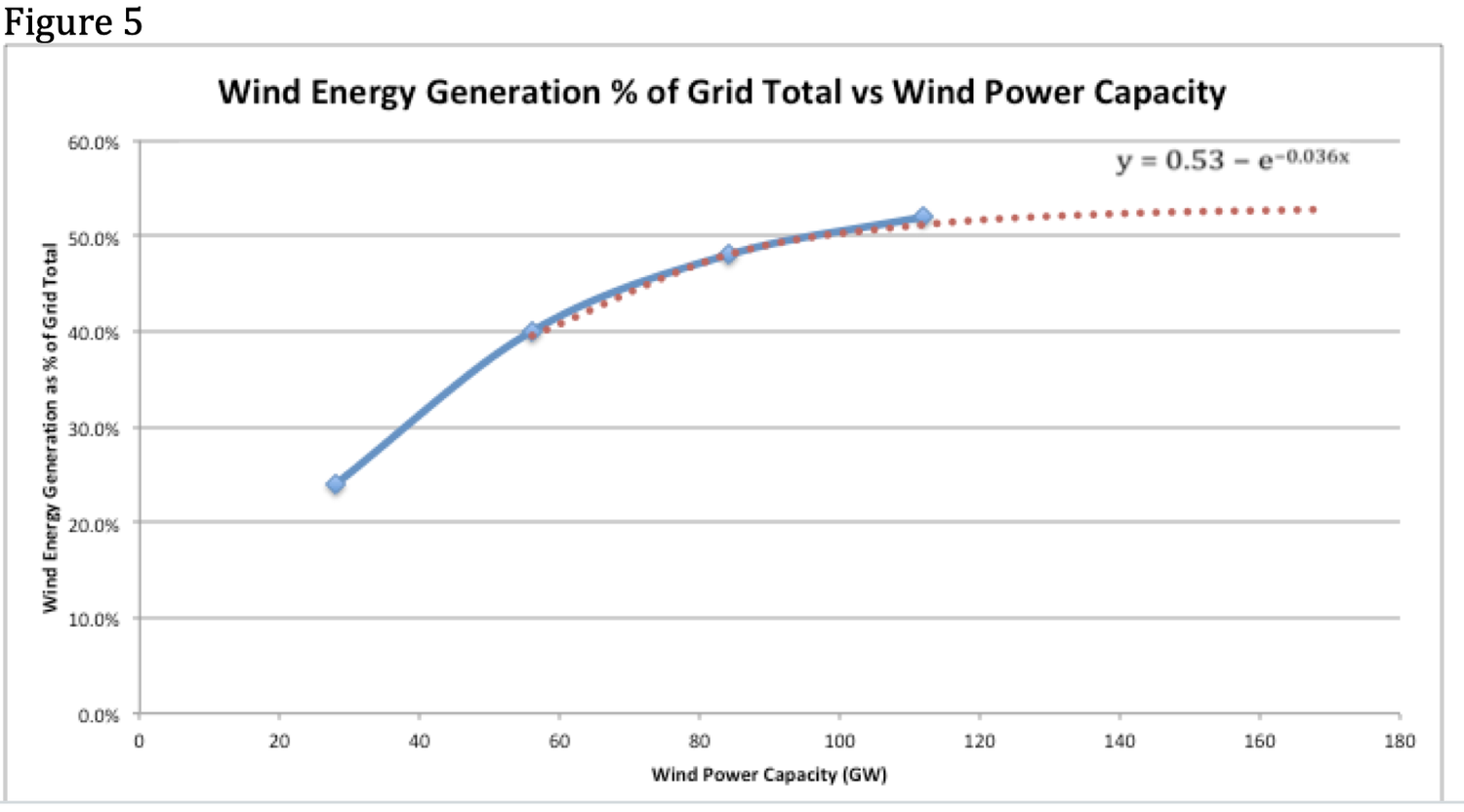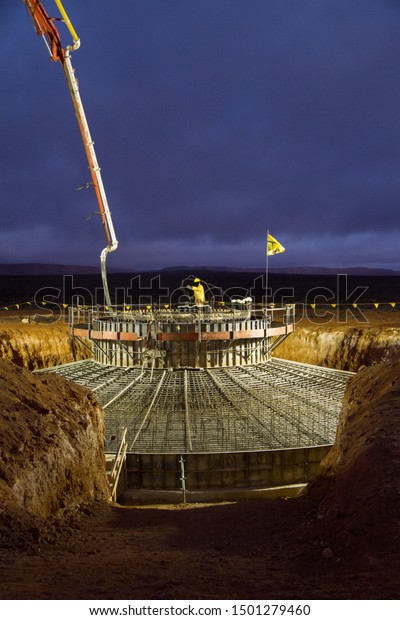
Posted on 04/02/2023 5:07:24 AM PDT by MtnClimber
A reader named Bill Ponton has just produced an important new Report that explores the effects and costs of continuing increases in generation of electricity from wind. The Report has the title “The Cost of Increasing UK Wind Power Capacity: A Reality Check.” Ponton has sent his Report to me, and I’m writing about it now even though I don’t yet have a link to provide readers with access to the full Report. I will update this post with a link to the full Report as soon as I have it.
Ponton’s Report follows and builds on prior work of Roger Andrews and Ken Gregory that has previously been featured at this site. The idea of each of these researchers has been to use publicly available data from some jurisdiction as to electricity consumption, and as to electricity generation from each source — natural gas, nuclear, wind, solar, coal, hydro, etc. — to build a spreadsheet that can then be manipulated to investigate what happens on changing various assumptions going forward. In 2018, Andrews performed such an exercise for California and Germany, using daily data from 2016 and 2017. In 2021, Gregory performed a similar exercise for the lower 48 U.S. states, this time using hourly data from 2019 and 2020. Ponton’s Report is now based on data from the UK from 2022, this time at 2.5 minute intervals throughout the year.
Also in the tradition of Andrews and Gregory, Ponton is an unpaid amateur, doing this important work on his own time for the benefit of humanity. It is truly incredible that, with the vast amounts of government funding available in this area, nobody gets paid for the most important investigations, which are to look into whether the proposed energy system of the future might actually work, and at what cost.
The heart of Ponton’s Report is the first part, headed “Energy Generation and Power Capacity.” Here, Ponton investigates what happens when the amount of wind power generation in the UK is doubled, tripled and quadrupled from the current level. This investigation is highly significant, because renewable power advocates repeat endlessly that all that is needed to replace fossil fuels is the political will to build enough renewable generation capacity, and that generation from wind (and solar) are actually cheaper today than generation from fossil fuels. But then, wind power is intermittent. Does that fact undermine the claims that wind (or solar) can fully replace fossil fuels in electricity generation, and at lower cost? How does vastly increasing the generation from wind play out in the real world?
Ponton begins by laying out the baseline of electricity generation in the UK for 2022:
In 2022, the UK derived: 24% of its electric energy from wind generation, 43% from gas turbine generation and 33% from other sources such as coal, nuclear, hydro and biomass. . . . The UK currently has 28 GW wind power capacity, 14 GW of onshore and 14 GW of offshore, with the potential to generate 245,280 GWH per year [3]. It actually generated 61,631 GWH in wind energy in 2022 or approximately 25% of the total wind power capacity.
Ponton’s Figure 1 shows the actual pattern of electricity generation by source for 2022:

Demand varies from a low of about 25 GW to a high of just over 45 GW. The “other” category of generation stays fairly constant throughout the year, in the range of about 7 GW to 11 GW. But wind generation varies wildly, from a high of the full 28 GW down to as little as about 2 GW, depending on whether or not the wind is blowing. And the generation from natural gas swings just as wildly, following the swings of the wind.
OK then, what happens when the generation from wind is doubled at each data point? And the answer is that the cost of the wind-generated electricity doubles, but the amount of useful electricity produced is far less than doubled, because now much of the generation comes at times when production exceeds customer demand, and therefore the excess must be “curtailed.” Ponton:
I start by doubling the value of wind power generation at each observation point in the 2022 GridWatch dataset. It results in total wind generation of 123,311 GWH per year. Conversely, I reduced gas turbine power generation at each interval by the amount required to keep the new sum of wind and gas turbine power generation equal to the original sum. However, at intervals where a doubling of wind power exceeds the original sum, wind power should be limited to the value of the original sum. In addition, gas turbine power generation must not fall below 1,373 MW. I impose this constraint because it is the minimum level of gas turbine generation observed over every period in 2022. Both these constraints result in a curtailment of wind energy generation of 18,505 GWH, or 15% of the total wind energy generated, and useful wind energy generation of 104,805 GWH, or 40% of the total energy provided to the grid.
So doubling of wind generation capacity does not take the percent of UK electricity from wind from 24% to 48%, but only to 40%. The remaining 8% gets discarded because it is produced at times when it cannot be used.
Here is Ponton’s graph of what the generation mix looks like after doubling of wind capacity:

The chart shows much more blue (wind) and less green (natural gas), but the natural gas generation capacity is still fully needed from time to time, such as what appears to have been a wind drought in late April and early May.
And then, it’s just what you would expect after that. Each addition of another chunk of wind generation capacity equal to the current total of 28 GW adds the same increment of cost, but provides less and less useful electricity, because more and more comes at times when it cannot be used and must be curtailed. Ponton:
With tripling, I obtained curtailment of wind energy generation of 59,851 GWH, or 32% of the total wind energy generated, and useful wind energy generation of 125,114 GWH, or 48% of the total energy provided to the grid. With quadrupling, I obtained curtailment of wind energy generation of 110,088 GWH, or 45% of the total wind energy generated, and useful wind energy generation of 136,532 GWH, or 52% of the total energy provided to the grid.
Meanwhile, the natural gas backup gets used less and less, but none of it can be eliminated, because all of it could be needed at any time. It must remain fully maintained, fully staffed, and fully fueled.
Ponton has made a significant contribution to the discussion by producing a graph showing the pattern of increases of useful electricity from wind as wind generation increases by additional multiples. Here it is:

The percent of generation from wind approaches a limit asymptotically. The particular limit (53% of total annual electricity generation in this graph) is driven by assumptions in the spreadsheet. The most important ones here are that the generation from the “other” sources does not change from 2022 actual figures, and that the generation from natural gas will not go below 1.373 GW (which was the lowest natural gas output at any data point in 2022). However, if those assumptions are eliminated, and wind is commissioned to replace everything to the extent it is capable of doing so, it is apparent that the percentage of electricity generated from wind will still experience rapidly slowing increases as more wind capacity is added, and will approach a limit asymptotically. This means that each incremental addition of wind generation capacity produces electricity that is more and more costly, with the costs accelerating rapidly after the tripling of existing capacity.
Ponton’s Report goes on to consider additional issues, such as various cost considerations, as well as potentially using energy storage to address the problem of overproduction and curtailment. I will delve into those things in future posts.
Doubling the number of bird choppers still won’t let you chop birds when the wind is not blowing.
I use to think the Carbon scam was dictators with funny hats trying to get their hands in our pockets. I am now convinced it an enemy plot to get the West to self sabotage.
There just are not that many places with good wind resources and most are very remote from where you need the power.
For example, in Alabama during the day we consume a lot more power in the summer (when it's hot) than we do at night during the summer. More so on weekends (when everybody is home from work and school). But on weekdays a lot of homes consume little power during the day while the family is at work and school, only for power demand to spike in the afternoon when everybody gets home from school and work. This change in the day isn't as much if the couple is retired or working from home. But in the winter the power consumption is more at night to keep the house warm during cold nights.
Then there are occasions, like family holidays. Maybe your home consumes very little because your away, or maybe your home consumes a lot because your extended family is staying at your house.
Then you get into city-wide cycles (daily commuters going to work in the city, making power demand increase at 7:00 AM and decrease at 5:00 PM). Or city-wide occasions. For example, in Alabama during football Saturday, the two largest cities by population for the day are Tuscaloosa and Auburn as football fans spend at least half a day there, vastly increasing power demand at the stadiums and restaurants.
The only way for that all to work all the time is for power to be stable all the time and able to produce at large capacity all the time. Solar and wind don't cut the mustard for grid power.
Any intermittent power source will require huge amount of energy storage for it to be viable.

Similar article from 2010:
https://www.wind-watch.org/news/2010/04/08/wind-power-is-a-complete-disaster/
“There is no evidence that industrial wind power is likely to have a significant impact on carbon emissions. The European experience is instructive. Denmark, the world’s most wind-intensive nation, with more than 6,000 turbines generating 19% of its electricity, has yet to close a single fossil-fuel plant. It requires 50% more coal-generated electricity to cover wind power’s unpredictability, and pollution and carbon dioxide emissions have risen (by 36% in 2006 alone)...”
Pi g
Silly people.
Science does not matter.
Efficiency does not matter.
Cost/Benefit does not matter.
Electric rates do not matter.
A dictate has been issued. You may not question it.
Solar is its own special challenge. It goes off at sundown every night and remains off until sunrise the following day.
All/any form of power generation has a place — but only if certain criteria are invoked.
You entire power system MUST provide power to all users 24/7 barring a disaster (e.g., tornado, hurricane, earthquake — all can provide temporary down time). What the corrupt band of treehuggers have done is convince the idiots in charge that reliable base load generation can be replaced with something that will get you invited to the “cool kids” party.
Temporary generation (i.e., windmills when wind blowing, solar in the daytime, etc) either must be limited to just following the load or pushing to a STORAGE device. Mind, powering pumps to push water uphill is great, but that is expensive infrastructure.
Easy solution - just replace the wind with solar.
just kidding!
Disclaimer: Opinions posted on Free Republic are those of the individual posters and do not necessarily represent the opinion of Free Republic or its management. All materials posted herein are protected by copyright law and the exemption for fair use of copyrighted works.